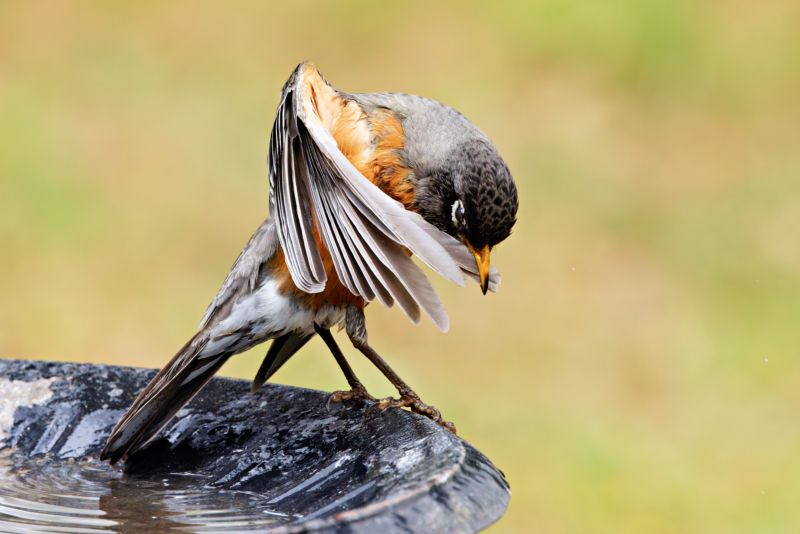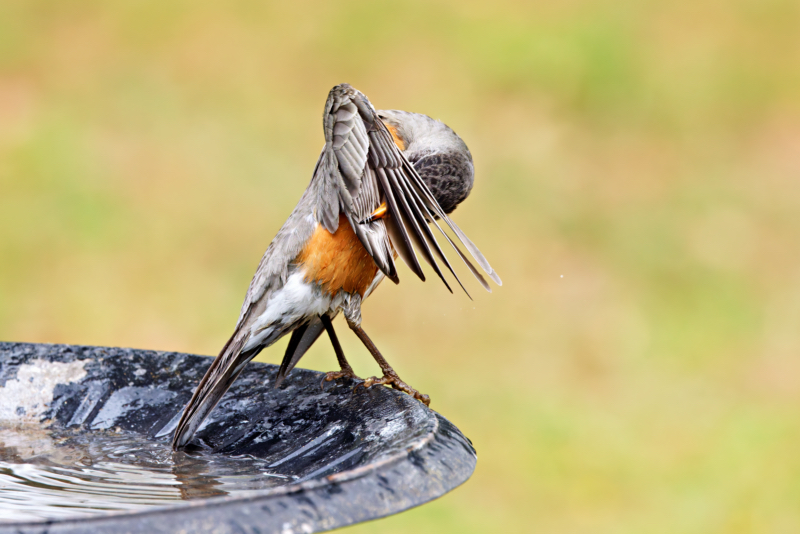Today’s featured photo is a close-up of an adult American Robin after taking a refreshing dip in my backyard birdbath. But look closer! You might notice something interesting about the way it’s using its beak after a good splash.

Birds have a fascinating technique for keeping their feathers in tip-top shape after a bath. Unlike us toweling off, they use their beaks for a specialized “unzipping” and “zipping” action on their feathers. This behavior is crucial for efficient flight, insulation, and waterproofing.
Here’s the science behind it: Each feather vane (the flat, branching parts of the feather) is made up of countless tiny barbs that hook together like microscopic zippers. When a bird gets wet, these barbs can loosen and separate.
That’s where the beak comes in! The robin in the photo is using its beak to gently comb through its feathers, realigning the barbs and essentially “zipping” them back together. This not only restores the feather’s shape but also brings back its waterproofing and insulating abilities – crucial for staying warm and dry. The preening behavior also helps to distribute the natural oils produced by the bird’s preen gland, which further waterproofs the feathers.

This preening behavior is more than just a zipper fix, though. It also acts like a feather cleaning service. As the robin runs its beak through its plumage, it removes any dirt, debris, or even tiny hitchhikers like parasites that might have gotten stuck during the bath.
So, the next time you see a bird meticulously preening, remember the amazing “unzipping” and “zipping” process happening right before your eyes. It’s a vital part of their regular feather maintenance routine, ensuring their plumage stays healthy and functional for flight, insulation, and of course, looking their best!
